15 Must-Try Asian Steak Recipes That’ll Transform Your Dinner Game
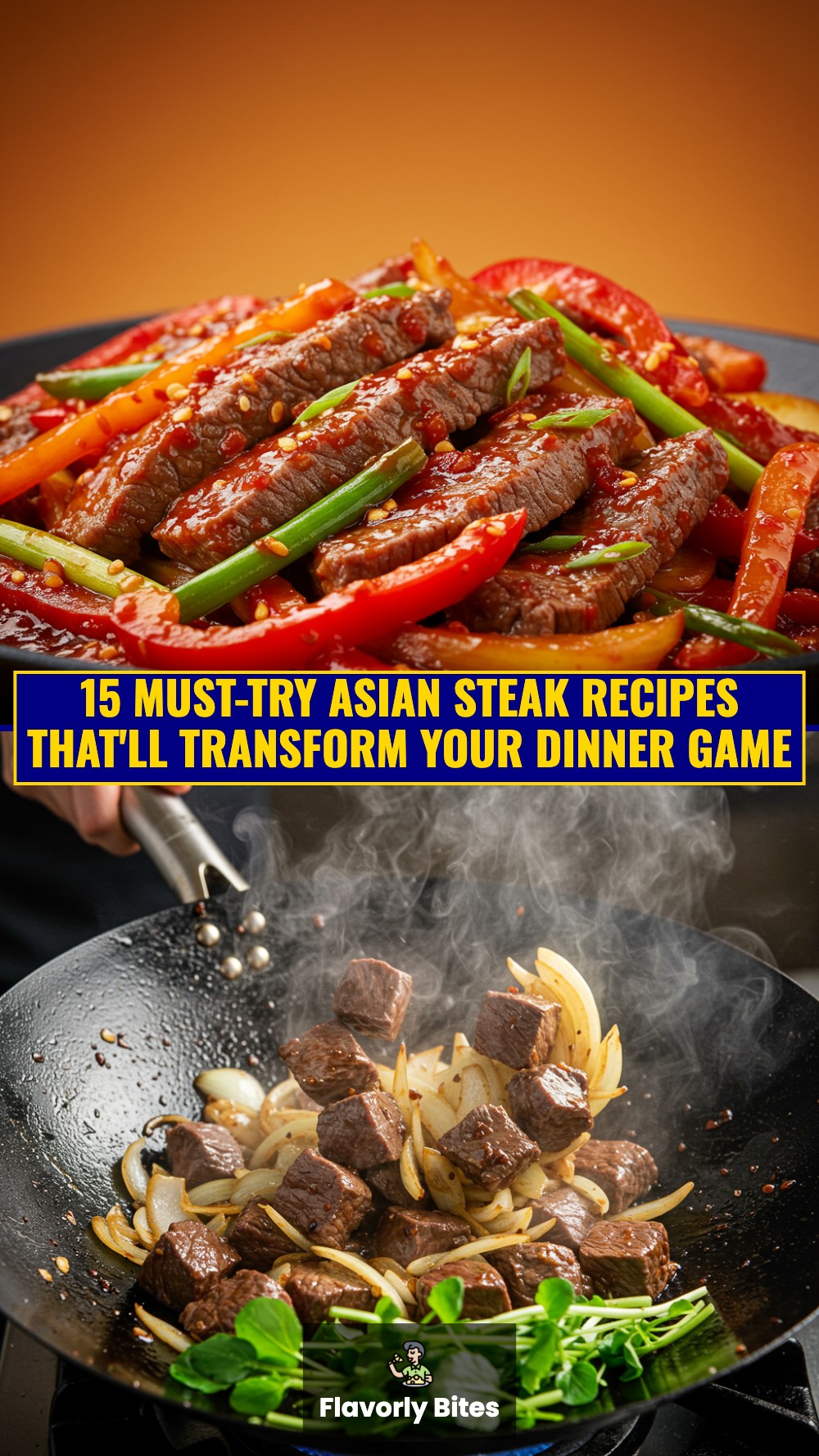
Asian cuisine brings an incredible depth of flavors to steak preparation, combining traditional marinating techniques with bold spices and sauces that transform ordinary beef into extraordinary meals. Whether you’re craving the sweet-savory balance of Korean bulgogi or the aromatic complexity of Thai lemongrass beef, these 15 Asian steak recipes will elevate your cooking game and impress your family and friends.
Expert Insights on Asian Steak Cooking
According to culinary research published in the Journal of Food Science, “marinades increase the meat’s water-holding capacity, reduce cooking losses, and improve the meat’s color and juiciness.” Asian marinades, particularly those featuring soy sauce, rice vinegar, and natural enzymes from fruits like pineapple and pear, are especially effective at tenderizing tough cuts while infusing deep, complex flavors.
| Asian Steak Cooking Benefits | Details |
|---|---|
| Marination Time | 30 minutes to 24 hours for optimal flavor |
| Best Cuts | Flank, ribeye, sirloin, and thinly sliced chuck |
| Key Ingredients | Soy sauce, sesame oil, ginger, garlic |
| Cooking Methods | High-heat grilling, stir-frying, and pan-searing |
| Nutritional Benefits | High protein, iron, and essential amino acids |
1. Korean Bulgogi (Korean BBQ Beef)
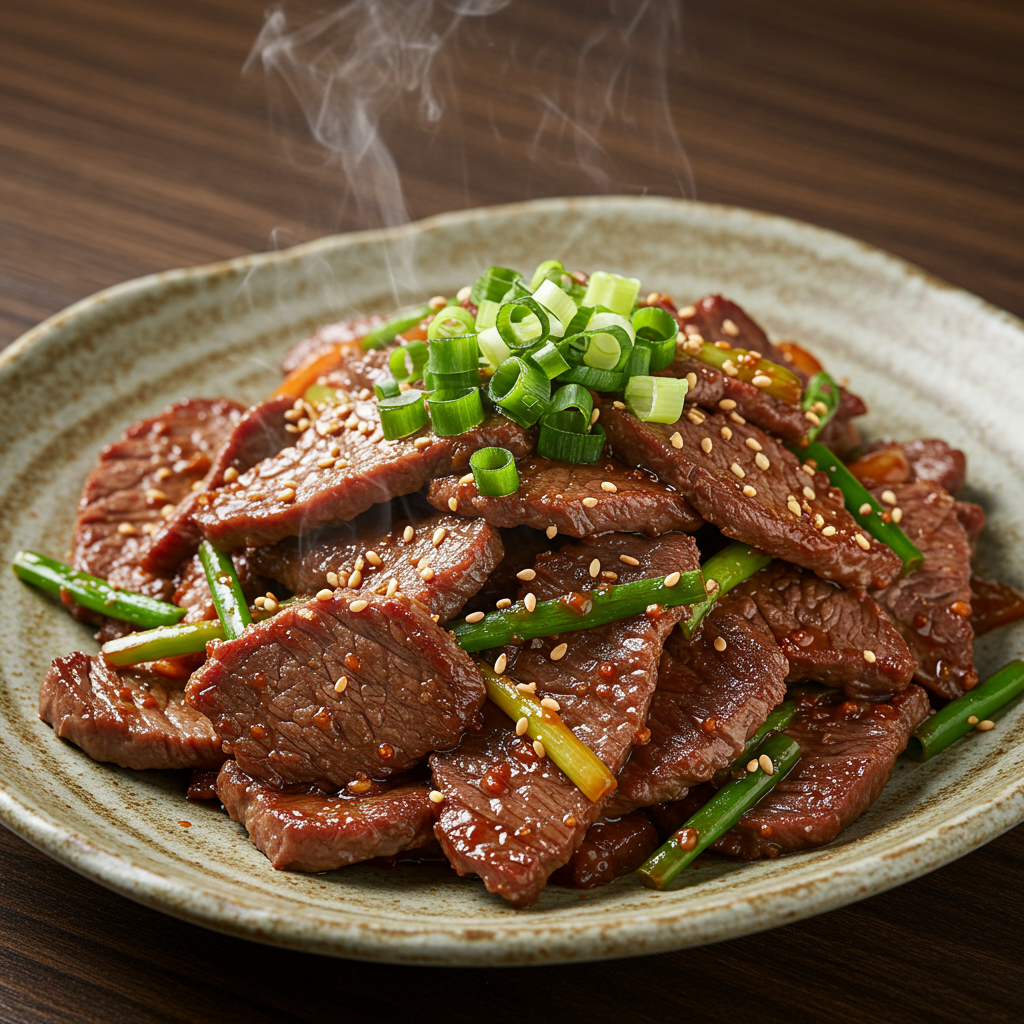
This classic Korean dish features paper-thin beef slices marinated in a sweet-savory sauce that caramelizes beautifully when grilled.
Ingredients:
- 2 lbs thinly sliced ribeye or sirloin
- 1/2 cup soy sauce
- 1/4 cup brown sugar
- 2 tablespoons sesame oil
- 1 Asian pear, grated
- 4 cloves garlic, minced
- 1 tablespoon fresh ginger, grated
- 2 green onions, chopped
- 1 tablespoon toasted sesame seeds
Instructions:
- Prepare the marinade by whisking together soy sauce, brown sugar, sesame oil, grated pear, garlic, and ginger in a large bowl.
- Add the beef and toss to coat evenly. Cover and refrigerate for at least 2 hours or overnight.
- Heat a grill or grill pan over high heat. Cook the marinated beef for 2-3 minutes per side.
- Garnish with green onions and sesame seeds before serving.
Pro-Tip: The Asian pear in this recipe contains natural enzymes that help tenderize the meat while adding subtle sweetness. If you can’t find Asian pear, substitute with regular pear or even a splash of Sprite!
2. Japanese Teriyaki Steak
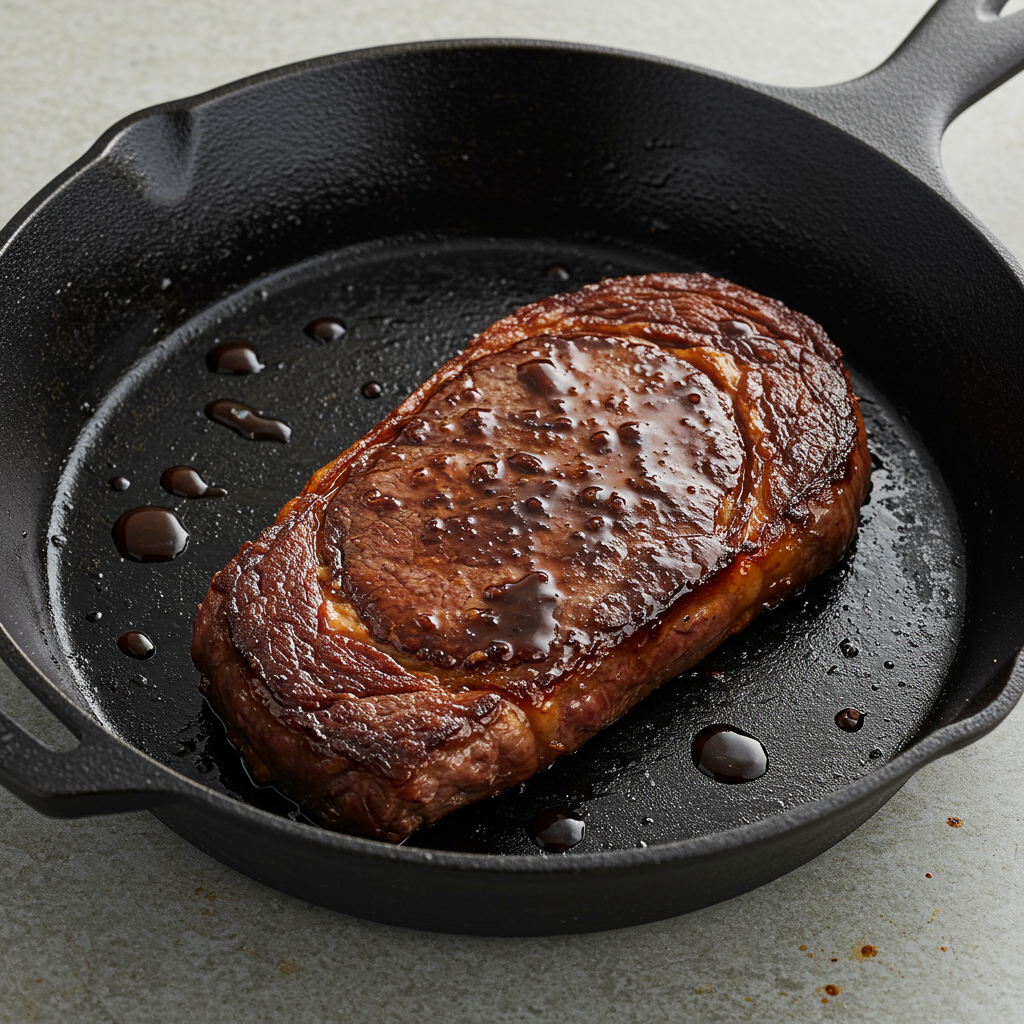
This glossy, umami-rich steak showcases the perfect balance of sweet mirin and salty soy sauce that defines Japanese cuisine.
Ingredients:
- 4 ribeye steaks (1-inch thick)
- 1/3 cup soy sauce
- 1/4 cup mirin
- 2 tablespoons brown sugar
- 2 cloves garlic, minced
- 1 tablespoon fresh ginger, grated
- 1 tablespoon vegetable oil
- 1 tablespoon cornstarch
- 2 tablespoons water
Instructions:
- Season steaks with salt and pepper. Let them reach room temperature for 30 minutes.
- Mix marinade ingredients (except cornstarch and water) in a bowl. Reserve half for basting.
- Marinate steaks in remaining sauce for 30 minutes.
- Heat oil in a cast-iron skillet over medium-high heat. Cook steaks 4-5 minutes per side for medium-rare.
- Make glaze by combining reserved marinade with cornstarch slurry. Cook until thickened.
- Brush glaze over steaks and let rest 5 minutes before serving.
3. Thai Lemongrass Beef
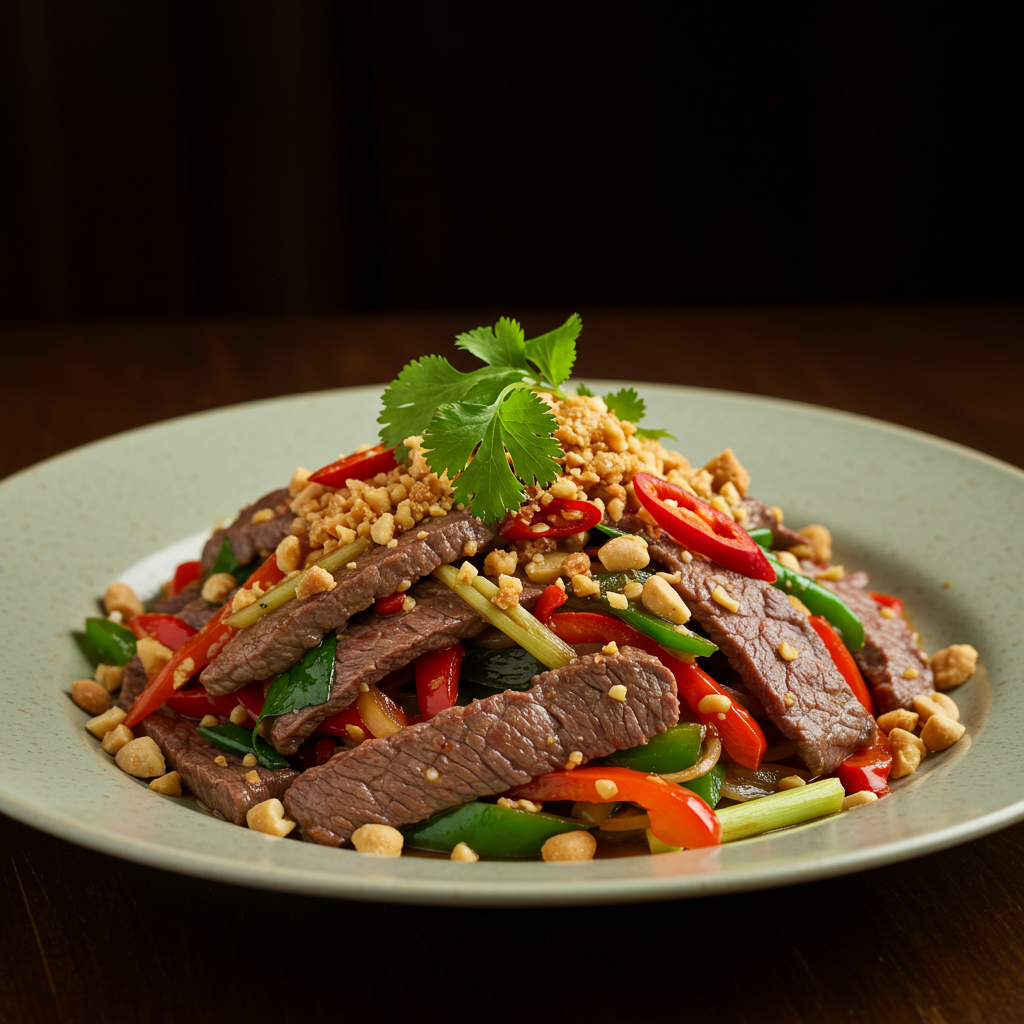
This aromatic dish captures the essence of Thai street food with its bright, citrusy flavors and subtle heat.
Ingredients:
- 1.5 lbs flank steak, sliced thin against the grain
- 3 stalks lemongrass, tender parts only, minced
- 4 cloves garlic, minced
- 2 Thai chilies, minced (adjust to taste)
- 3 tablespoons fish sauce
- 2 tablespoons brown sugar
- 2 tablespoons lime juice
- 1 tablespoon vegetable oil
- 1/4 cup fresh cilantro, chopped
- 2 tablespoons roasted peanuts, crushed
Instructions:
- Prepare marinade by combining lemongrass, garlic, chilies, fish sauce, brown sugar, and lime juice.
- Marinate beef for at least 1 hour or up to 4 hours.
- Heat oil in a wok or large skillet over high heat.
- Stir-fry beef in batches for 2-3 minutes until just cooked through.
- Garnish with fresh cilantro and crushed peanuts.
Pro-Tip: To easily mince lemongrass, remove the tough outer layers and use only the tender white and pale green parts. A food processor makes quick work of this aromatic herb!
4. Chinese Black Pepper Beef
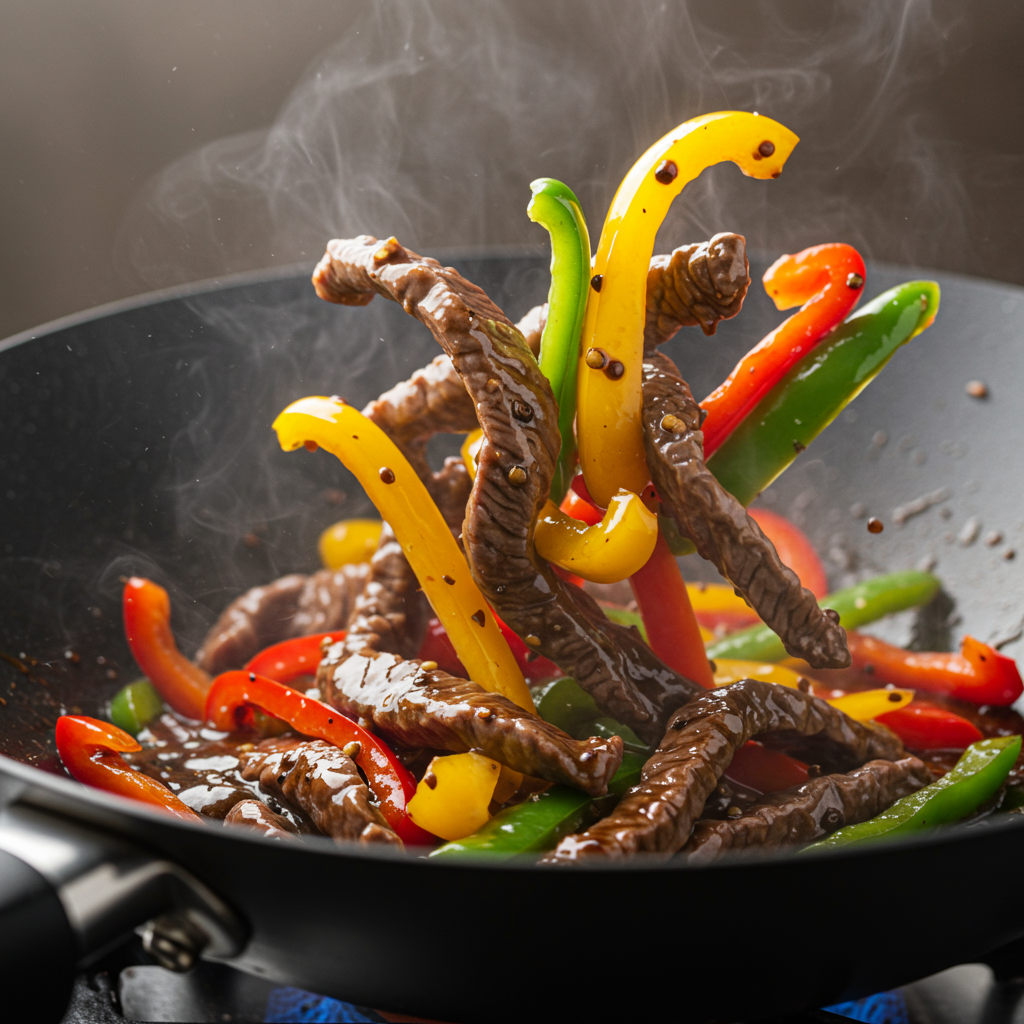
This Cantonese-style dish features tender beef strips coated in a fragrant black pepper sauce that’s both spicy and savory.
Ingredients:
- 1 lb beef sirloin, cut into strips
- 2 tablespoons soy sauce
- 1 tablespoon oyster sauce
- 1 teaspoon cornstarch
- 2 tablespoons vegetable oil
- 1 onion, sliced
- 1 bell pepper, sliced
- 3 cloves garlic, minced
- 2 tablespoons freshly ground black pepper
- 1 tablespoon dark soy sauce
- 1 teaspoon sugar
- 2 green onions, chopped
Instructions:
- Marinate beef in soy sauce, oyster sauce, and cornstarch for 15 minutes.
- Heat oil in a wok over high heat. Stir-fry beef until 70% cooked, then remove.
- Add vegetables and garlic to the wok. Stir-fry for 2 minutes.
- Return beef to wok with black pepper, dark soy sauce, and sugar.
- Toss everything together for 1-2 minutes until beef is fully cooked.
- Garnish with green onions before serving.
5. Vietnamese Lemongrass Beef (Bo Nuong)
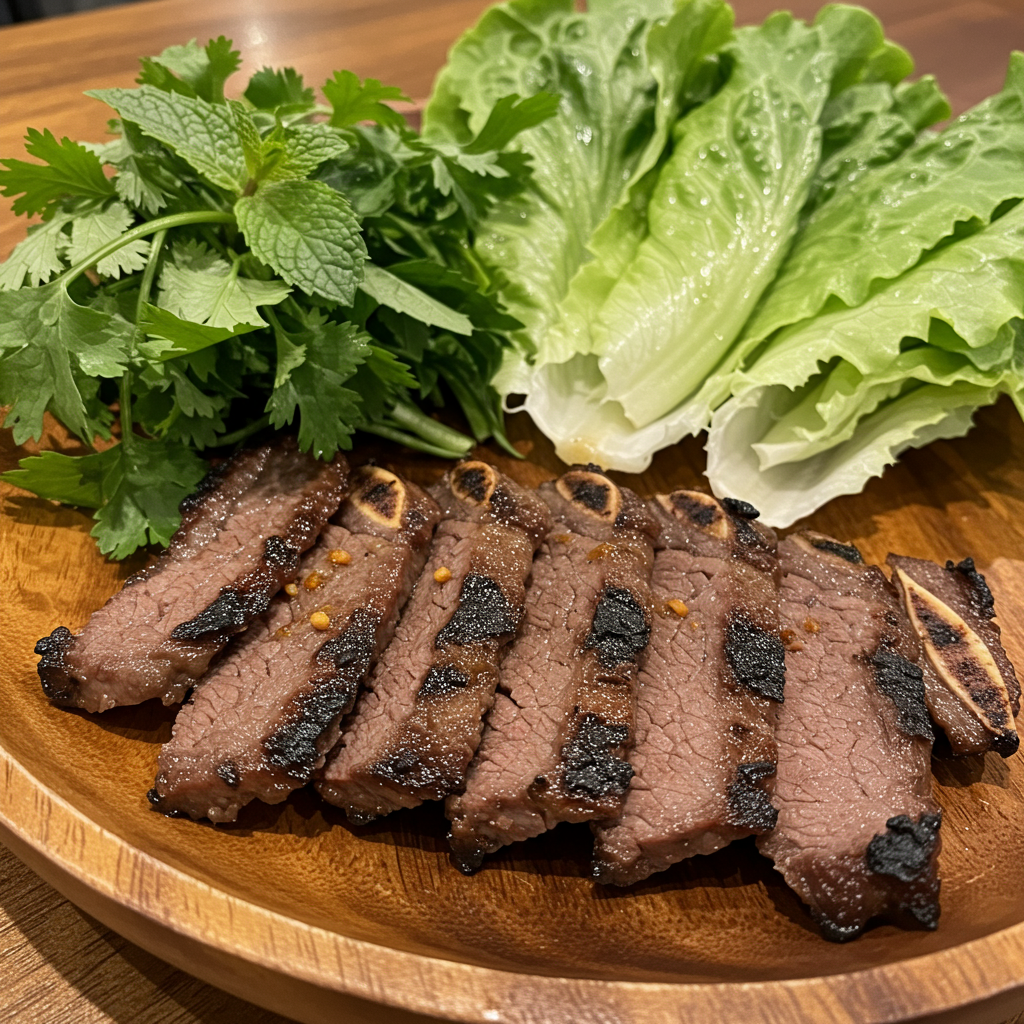
This grilled beef dish is a staple of Vietnamese cuisine, featuring bold flavors and aromatic herbs.
Ingredients:
- 2 lbs beef short ribs or chuck roast, sliced thin
- 3 stalks lemongrass, minced
- 4 cloves garlic, minced
- 2 shallots, minced
- 2 tablespoons fish sauce
- 1 tablespoon soy sauce
- 1 tablespoon brown sugar
- 1 tablespoon vegetable oil
- 1 teaspoon five-spice powder
- Fresh herbs (cilantro, mint, basil)
- Rice paper and lettuce for wrapping
Instructions:
- Combine marinade ingredients in a bowl and mix well.
- Marinate beef for at least 2 hours or overnight.
- Grill beef over high heat for 2-3 minutes per side.
- Serve with fresh herbs, rice paper, and lettuce for wrapping.
Pro-Tip: Vietnamese five-spice powder includes star anise, cinnamon, fennel, cloves, and Sichuan peppercorns. This blend adds incredible depth to the marinade!
6. Korean Galbi (Marinated Short Ribs)

These sweet and savory short ribs are a Korean barbecue favorite that’s perfect for special occasions.
Ingredients:
- 3 lbs beef short ribs, cut flanken-style
- 1/2 cup soy sauce
- 1/4 cup brown sugar
- 2 tablespoons mirin
- 2 tablespoons sesame oil
- 1 Asian pear, grated
- 6 cloves garlic, minced
- 1 tablespoon fresh ginger, grated
- 4 green onions, chopped
- 2 tablespoons toasted sesame seeds
Instructions:
- Score the meat against the grain to ensure tenderness.
- Whisk marinade ingredients together in a large bowl.
- Marinate ribs for at least 4 hours or overnight.
- Grill over medium-high heat for 3-4 minutes per side.
- Let rest for 5 minutes before serving.
7. Indonesian Rendang-Style Beef
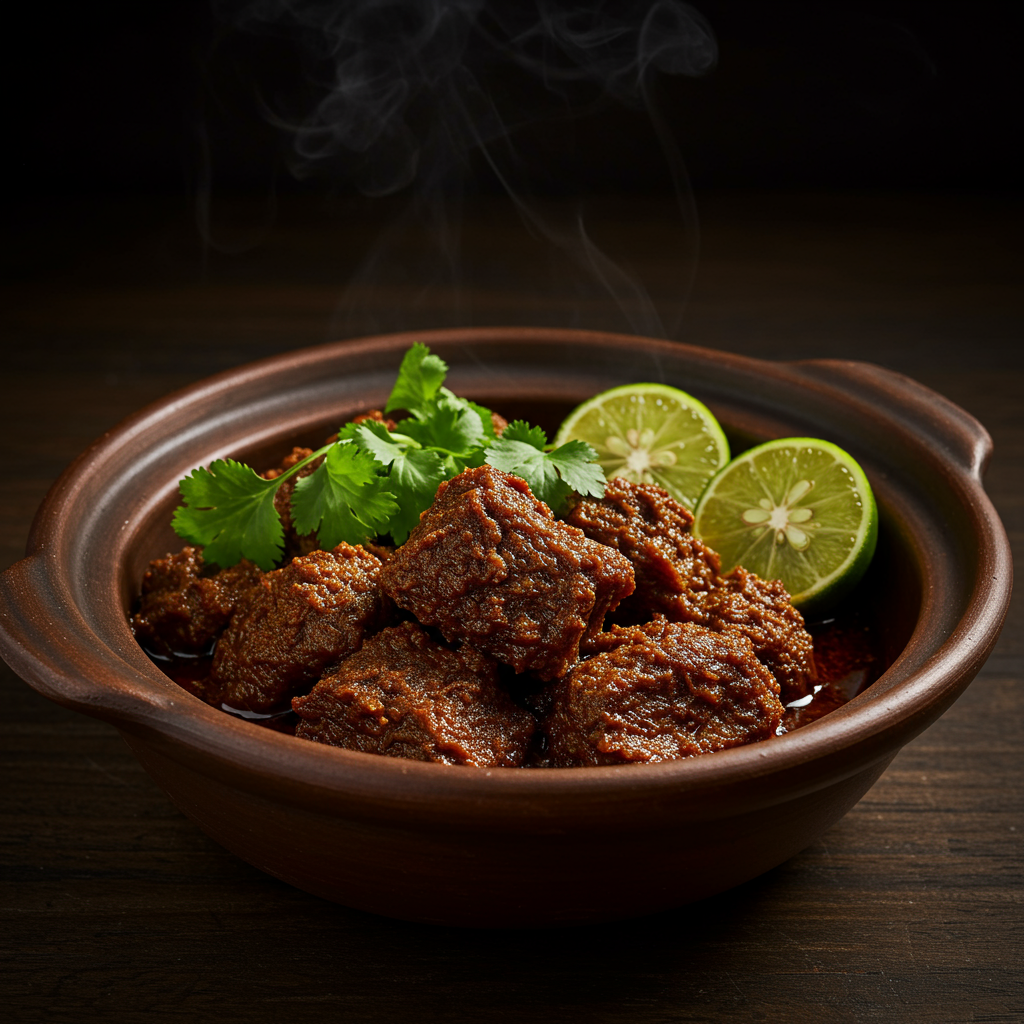
This slow-cooked beef dish features complex spices and coconut milk for an incredibly rich flavor.
Ingredients:
- 2 lbs beef chuck, cut into chunks
- 1 can (14 oz) coconut milk
- 3 tablespoons rendang paste (store-bought or homemade)
- 2 stalks lemongrass, bruised
- 4 kaffir lime leaves
- 2 tablespoons tamarind paste
- 2 tablespoons palm sugar
- 1 teaspoon salt
- 2 tablespoons vegetable oil
Instructions:
- Heat oil in a heavy-bottomed pot over medium heat.
- Brown beef on all sides, then remove and set aside.
- Cook rendang paste in the same pot until fragrant, about 3 minutes.
- Add coconut milk and bring to a gentle simmer.
- Return beef to pot with remaining ingredients.
- Simmer on low heat for 2-3 hours until beef is tender and sauce has thickened.
Pro-Tip: Traditional rendang is cooked until the sauce reduces to a dry coating on the meat. Be patient with this process – the result is worth the wait!
8. Japanese Sukiyaki Beef
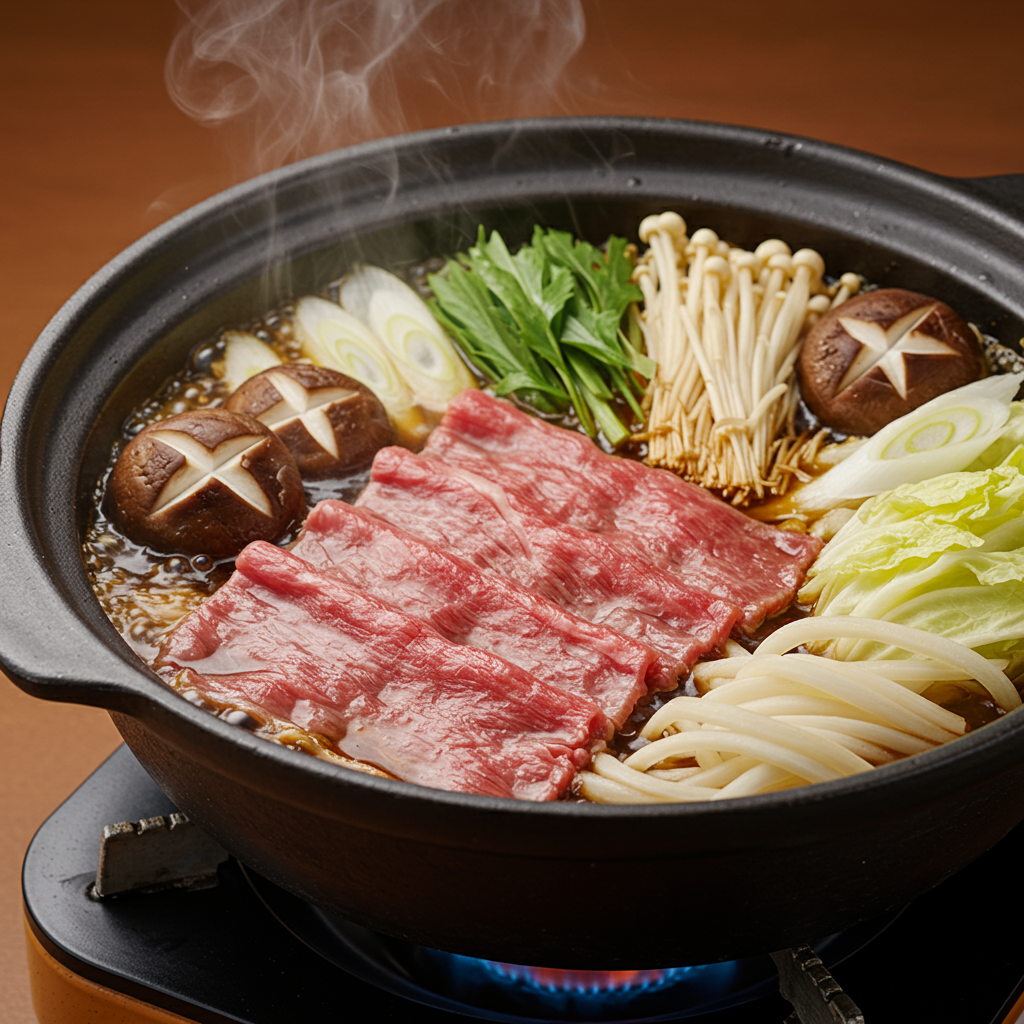
This one-pot wonder combines tender beef with vegetables in a sweet-savory broth.
Ingredients:
- 1 lb thinly sliced ribeye or sirloin
- 1/2 cup soy sauce
- 1/4 cup mirin
- 2 tablespoons sugar
- 1 cup beef broth
- 1 onion, sliced
- 4 shiitake mushrooms, sliced
- 2 cups napa cabbage, chopped
- 1 package (7 oz) shirataki noodles
- 4 green onions, cut into 2-inch pieces
- 2 tablespoons vegetable oil
Instructions:
- Heat oil in a large skillet or sukiyaki pan over medium heat.
- Brown beef quickly, about 1 minute per side. Remove and set aside.
- Combine sauce ingredients in the same pan and bring to a simmer.
- Add vegetables and cook for 3-4 minutes.
- Return beef to pan and cook for another 2 minutes.
- Serve immediately with steamed rice.
9. Thai Crying Tiger Steak
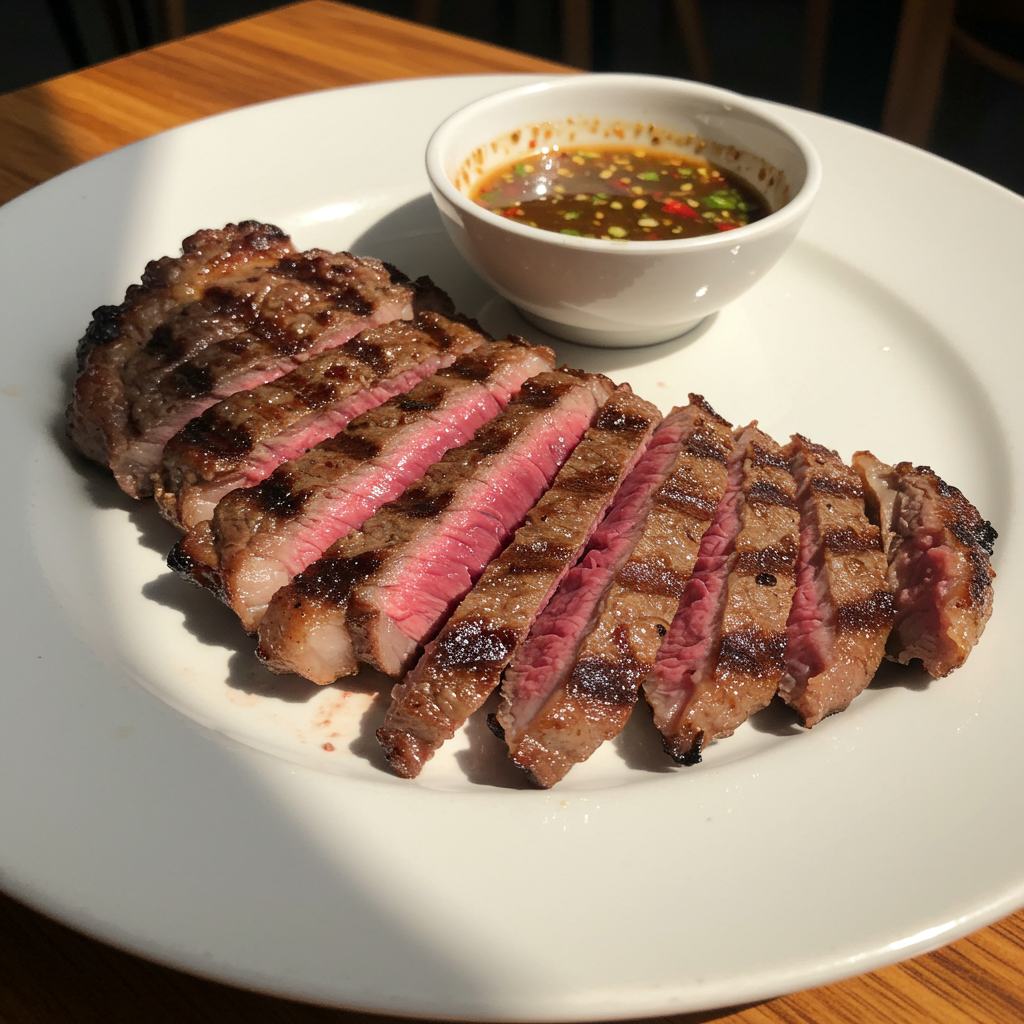
This grilled steak gets its name from the spicy dipping sauce that’s so hot it’ll make a tiger cry!
Ingredients:
- 2 lbs beef sirloin or flank steak
- 2 tablespoons vegetable oil
- 1 tablespoon fish sauce
- 1 teaspoon black pepper
- For the dipping sauce:
- 3 tablespoons lime juice
- 2 tablespoons fish sauce
- 1 tablespoon sugar
- 2 Thai chilies, minced
- 2 cloves garlic, minced
- 2 tablespoons fresh cilantro, chopped
Instructions:
- Season steak with oil, fish sauce, and pepper. Let marinate for 30 minutes.
- Make dipping sauce by combining all sauce ingredients.
- Grill steak over high heat for 4-5 minutes per side for medium-rare.
- Let rest for 5 minutes, then slice thin against the grain.
- Serve with the spicy dipping sauce.
10. Chinese Mongolian Beef
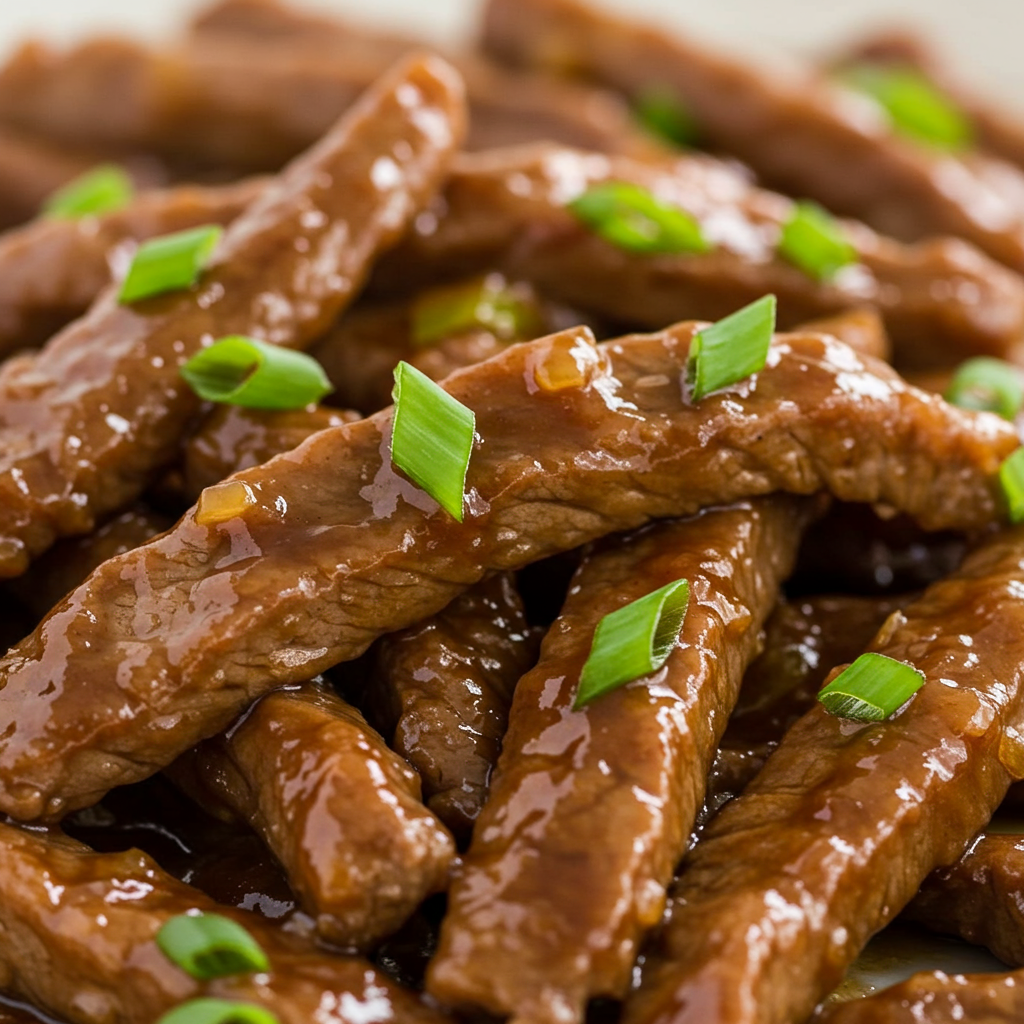
This popular American-Chinese dish features tender beef in a sweet and savory sauce.
Ingredients:
- 1 lb flank steak, sliced thin
- 1/4 cup cornstarch
- 2 tablespoons soy sauce
- 1 tablespoon vegetable oil
- For the sauce:
- 1/4 cup soy sauce
- 2 tablespoons brown sugar
- 1 tablespoon oyster sauce
- 1 teaspoon sesame oil
- 1/2 teaspoon red pepper flakes
- 4 green onions, cut into 2-inch pieces
- 2 tablespoons vegetable oil for frying
Instructions:
- Marinate beef in soy sauce and oil for 15 minutes.
- Toss with cornstarch until evenly coated.
- Heat oil in a wok over high heat. Fry beef until crispy, about 3 minutes.
- Remove beef and drain on paper towels.
- Make sauce by combining all sauce ingredients in the wok.
- Return beef to wok and toss with green onions.
Pro-Tip: The key to perfect Mongolian beef is getting the oil hot enough to create a crispy exterior while keeping the inside tender. Test with a small piece first!
11. Korean Beef Bulgogi Bowls
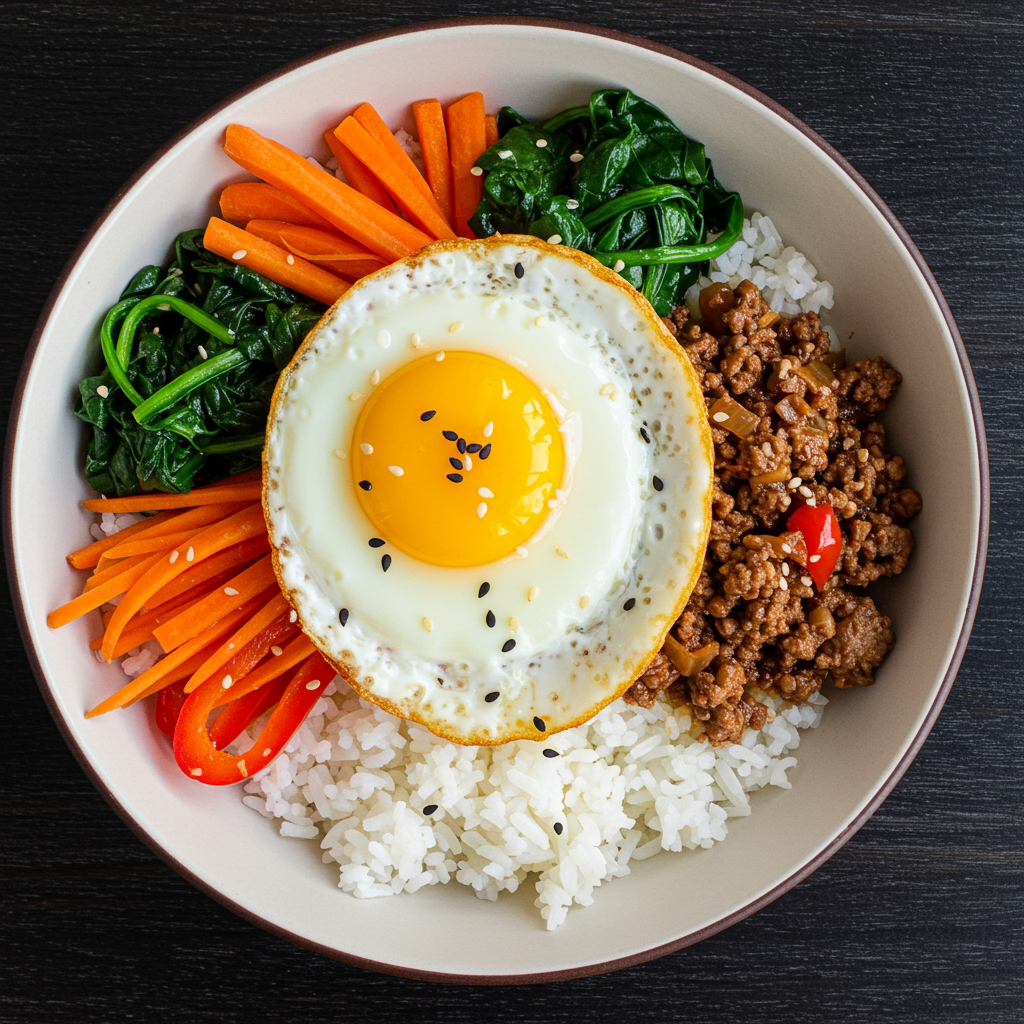
These deconstructed bowls make bulgogi accessible for weeknight dinners.
Ingredients:
- 1 lb ground beef
- 1/4 cup soy sauce
- 2 tablespoons brown sugar
- 1 tablespoon sesame oil
- 3 cloves garlic, minced
- 1 tablespoon fresh ginger, grated
- 1/2 teaspoon red pepper flakes
- 4 cups cooked rice
- 2 cups steamed vegetables
- 4 fried eggs (optional)
- 2 green onions, chopped
- 1 tablespoon sesame seeds
Instructions:
- Brown ground beef in a large skillet over medium-high heat.
- Add aromatics and cook for 1 minute until fragrant.
- Stir in sauce ingredients and cook for 2-3 minutes.
- Serve over rice with steamed vegetables and fried eggs.
- Garnish with green onions and sesame seeds.
12. Japanese Hibachi-Style Steak
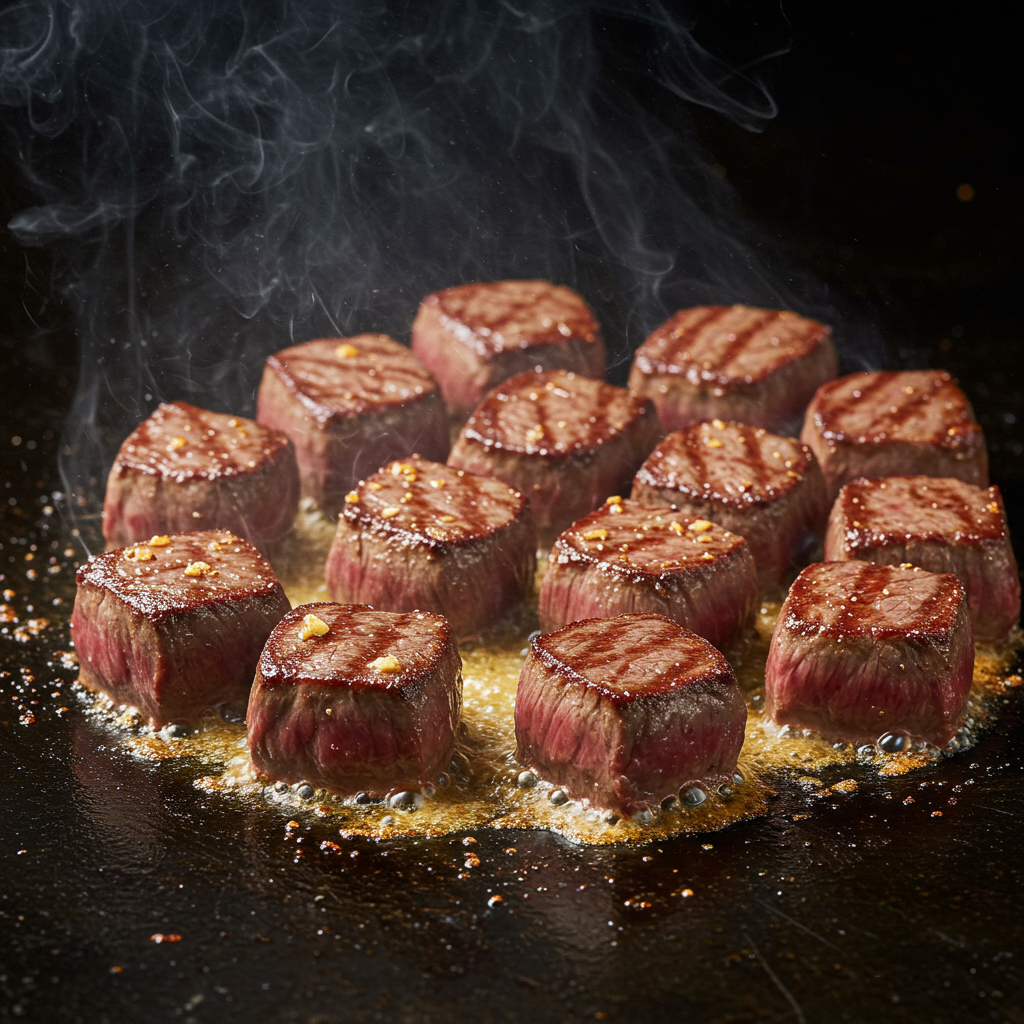
Recreate the hibachi restaurant experience at home with this flavorful steak recipe.
Ingredients:
- 4 filet mignon steaks
- 2 tablespoons soy sauce
- 1 tablespoon mirin
- 1 tablespoon sake (optional)
- 2 cloves garlic, minced
- 1 tablespoon fresh ginger, grated
- 2 tablespoons butter
- 1 tablespoon vegetable oil
- Salt and pepper to taste
Instructions:
- Season steaks with salt and pepper.
- Heat oil in a large skillet or griddle over high heat.
- Sear steaks for 3-4 minutes per side for medium-rare.
- Add aromatics and cook for 30 seconds.
- Deglaze with soy sauce, mirin, and sake.
- Finish with butter and serve immediately.
13. Vietnamese Shaking Beef (Bo Luc Lac)
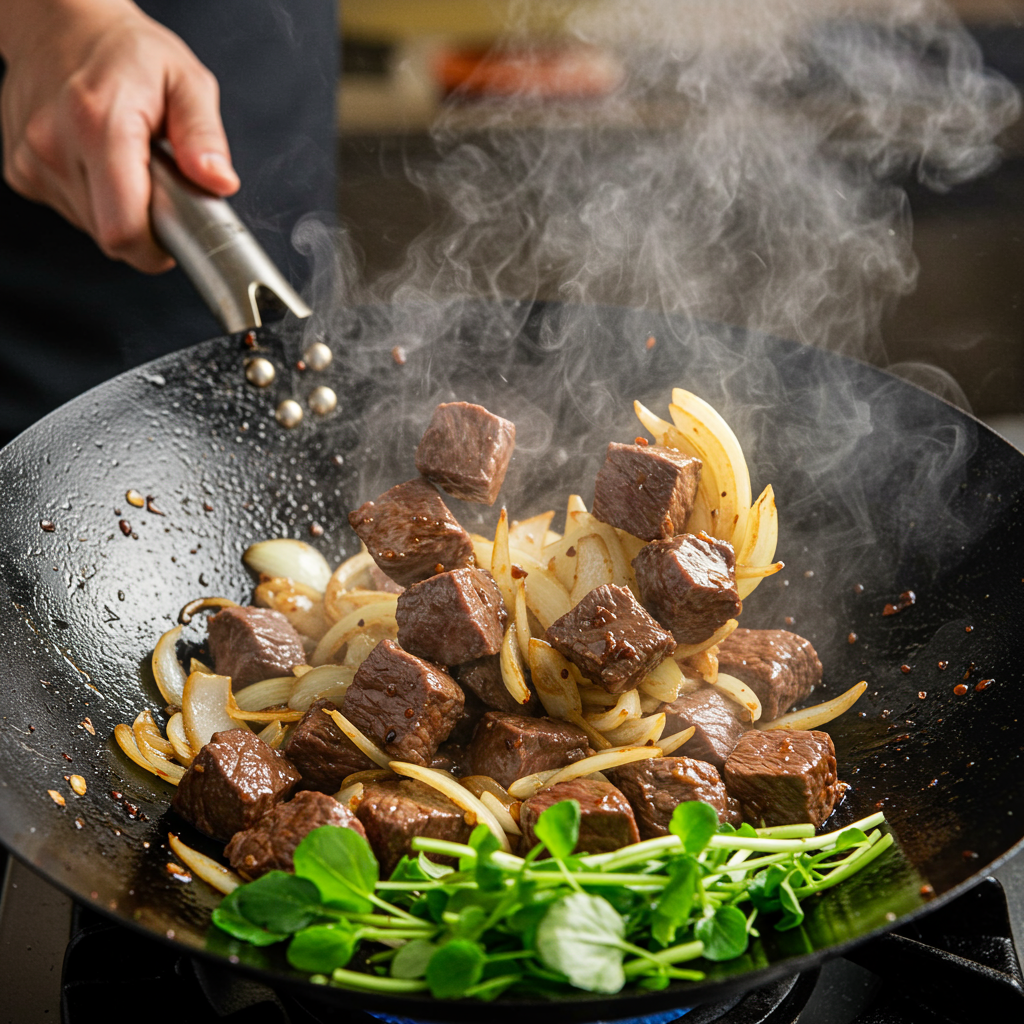
This dish gets its name from the vigorous shaking motion used while stir-frying.
Ingredients:
- 1.5 lbs beef tenderloin, cubed
- 2 tablespoons soy sauce
- 1 tablespoon oyster sauce
- 1 tablespoon sugar
- 2 cloves garlic, minced
- 1 tablespoon vegetable oil
- 1 red onion, sliced
- 2 tablespoons butter
- Watercress for serving
- Lime wedges for serving
Instructions:
- Marinate beef in soy sauce, oyster sauce, and sugar for 15 minutes.
- Heat oil in a wok over high heat.
- Stir-fry beef with garlic for 2-3 minutes.
- Add onion and continue stir-frying for 1 minute.
- Finish with butter and serve over watercress.
Pro-Tip: The “shaking” technique keeps the beef moving constantly, ensuring even cooking and preventing overcooking. Use your wrist to create a tossing motion!
14. Thai Basil Beef Stir-Fry
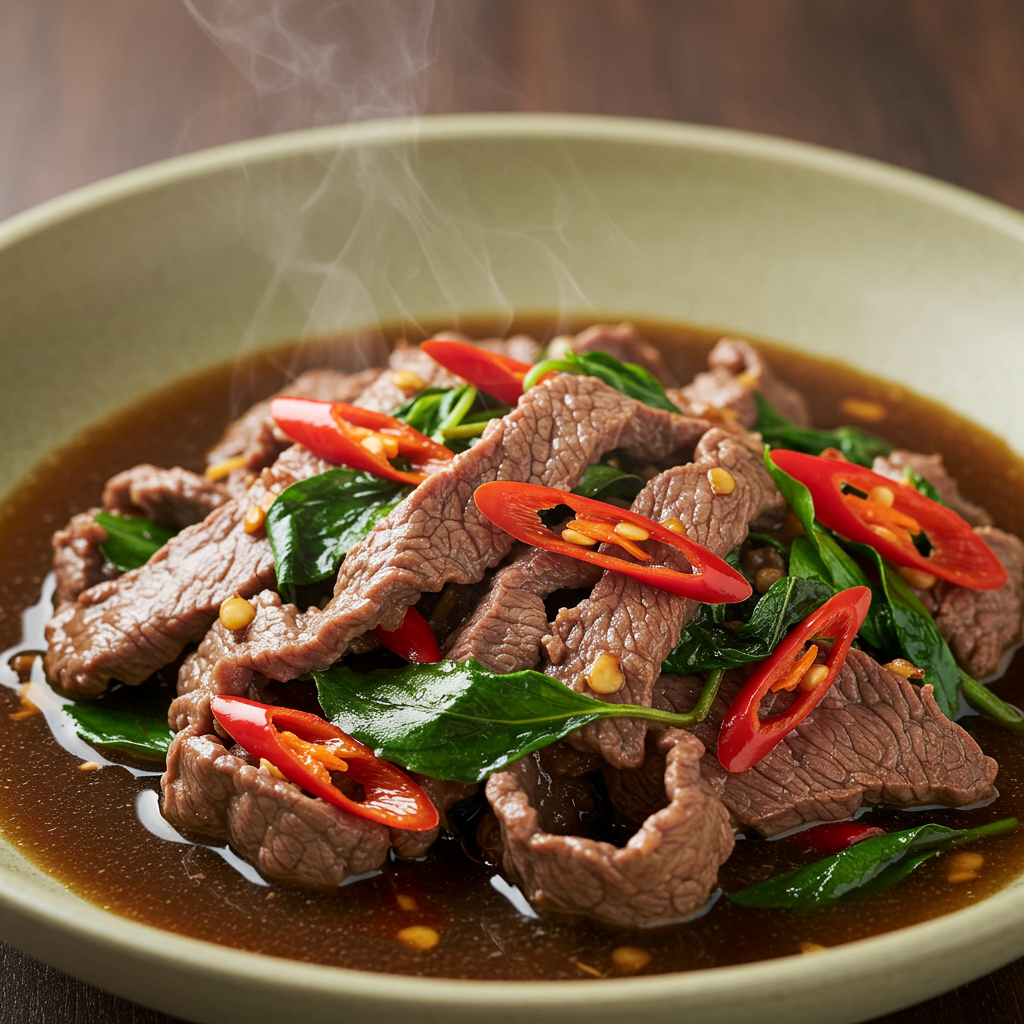
This aromatic dish showcases the unique flavor of Thai holy basil.
Ingredients:
- 1 lb beef sirloin, sliced thin
- 2 tablespoons vegetable oil
- 4 cloves garlic, minced
- 2 Thai chilies, minced
- 2 tablespoons fish sauce
- 1 tablespoon oyster sauce
- 1 teaspoon sugar
- 1 cup Thai holy basil leaves
- 2 tablespoons chicken broth
- Steamed rice for serving
Instructions:
- Heat oil in a wok over high heat.
- Add garlic and chilies, stir-fry for 30 seconds.
- Add beef and cook until just done, about 3 minutes.
- Season with fish sauce, oyster sauce, and sugar.
- Add basil and broth, toss until wilted.
- Serve immediately with steamed rice.
15. Korean Spicy Beef Stir-Fry
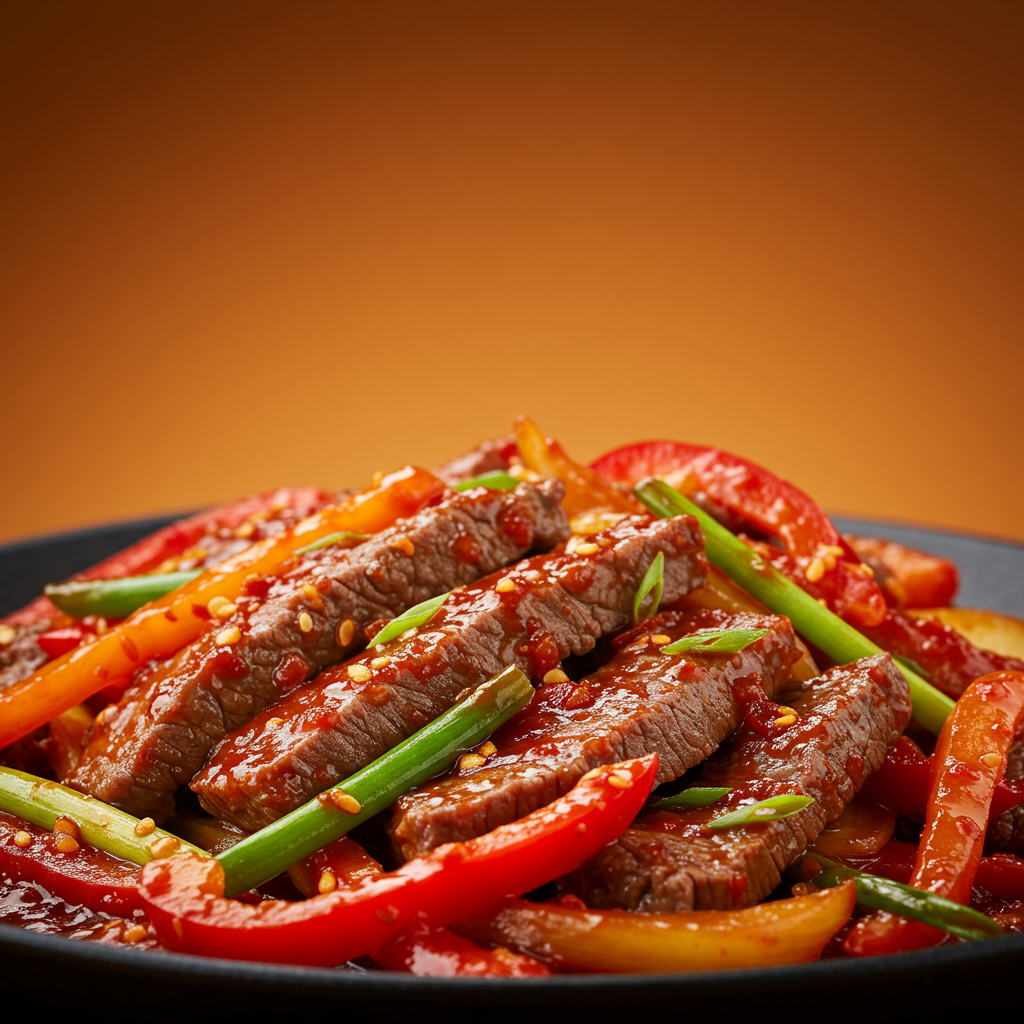
This fiery dish features gochujang, the cornerstone of Korean spicy cuisine.
Ingredients:
- 1 lb beef ribeye, sliced thin
- 2 tablespoons gochujang
- 1 tablespoon soy sauce
- 1 tablespoon mirin
- 1 tablespoon sesame oil
- 2 cloves garlic, minced
- 1 tablespoon fresh ginger, grated
- 1 onion, sliced
- 2 tablespoons vegetable oil
- 2 green onions, chopped
- 1 tablespoon sesame seeds
Instructions:
- Marinate beef in gochujang, soy sauce, mirin, and sesame oil for 30 minutes.
- Heat oil in a wok over high heat.
- Stir-fry beef until 70% cooked, then remove.
- Add onion and aromatics, cook for 2 minutes.
- Return beef to wok and finish cooking.
- Garnish with green onions and sesame seeds.
Pro-Tip: Gochujang varies in heat level between brands. Start with less and add more to taste – you can always make it spicier, but you can’t take the heat away!
Mastering Asian Steak Techniques
Marination is everything in Asian steak cooking. The combination of soy sauce, acids like rice vinegar or citrus, and natural tenderizers like ginger and garlic work together to break down tough fibers while infusing incredible flavor.
High-heat cooking is crucial for most Asian steak dishes. Whether you’re grilling, stir-frying, or pan-searing, getting your cooking surface blazing hot ensures proper caramelization and prevents overcooking.
Proper slicing can make or break your dish. Always slice against the grain to ensure tenderness, and for stir-fries, aim for uniform pieces that cook evenly.
Frequently Asked Questions
What are the best cuts of beef for Asian steak recipes? Flank steak, ribeye, and sirloin work excellently for most Asian preparations. Flank steak is particularly popular for stir-fries because it’s lean and takes on marinades beautifully. For grilling recipes like bulgogi, thinly sliced ribeye provides the perfect balance of tenderness and flavor.
How long should I marinate steak for Asian recipes? Most Asian marinades work their magic in 30 minutes to 2 hours. However, tougher cuts like flank steak benefit from longer marination times of 4-24 hours. The enzymes in ingredients like ginger, pineapple, and pear help break down proteins, so longer isn’t always better – over-marinating can make the meat mushy.
Can I substitute ingredients in Asian steak marinades? Absolutely! If you can’t find mirin, use a combination of rice vinegar and sugar. Fish sauce can be replaced with soy sauce plus a pinch of salt. For Asian pear, try regular pear, apple, or even a splash of apple juice. The key is maintaining the balance of sweet, salty, and umami flavors.
What’s the difference between light and dark soy sauce? Light soy sauce is saltier and used primarily for seasoning, while dark soy sauce is sweeter and thicker, used mainly for color and a deeper flavor. In most Asian steak recipes, light soy sauce is preferred unless specifically calling for the rich color of dark soy sauce.
How do I prevent my steak from becoming tough in stir-fries? The secret is high heat and quick cooking. Cut your steak into thin, uniform pieces, and don’t overcrowd the pan. Cook the beef until it’s just done – usually 2-3 minutes for thin slices. Remove it from heat while it’s still slightly pink inside, as it will continue cooking from residual heat.
Conclusion
These 15 Asian steak recipes represent a delicious journey through the diverse flavors of Asian cuisine. From the sweet caramelization of Korean bulgogi to the fiery heat of Thai crying tiger steak, each recipe offers a unique taste experience that transforms ordinary beef into extraordinary meals.
The beauty of Asian steak cooking lies in its emphasis on balance – sweet with salty, spicy with cooling, and tender with textural contrast. By mastering these fundamental techniques and understanding how different ingredients work together, you’ll be able to create restaurant-quality dishes in your own kitchen.
Here’s a bonus insight: Many of these recipes can be adapted for meal prep. Marinate your protein ahead of time, prep your vegetables, and you’ll have quick, flavorful dinners ready in minutes. The marinades also work beautifully with other proteins like chicken, pork, or even firm tofu for vegetarian versions.
Remember, cooking is about experimentation and personal taste. Don’t be afraid to adjust spice levels, try different cuts of meat, or add your own creative touches to these traditional recipes. The most important ingredient in any dish is the love and care you put into preparing it.
Helpful Resources
- https://www.allrecipes.com/recipe/246172/easy-bulgogi-korean-bbq-beef/
- https://damndelicious.net/2019/04/21/korean-beef-bulgogi/
- https://thewoksoflife.com/mongolian-beef-recipe/
- https://hot-thai-kitchen.com/thai-marinated-steak/
- https://www.recipetineats.com/asian-steak/
- https://www.marionskitchen.com/korean-style-beef-stir-fry/
- https://hot-thai-kitchen.com/beef-rendang/
- https://pmc.ncbi.nlm.nih.gov/articles/PMC10572579/






